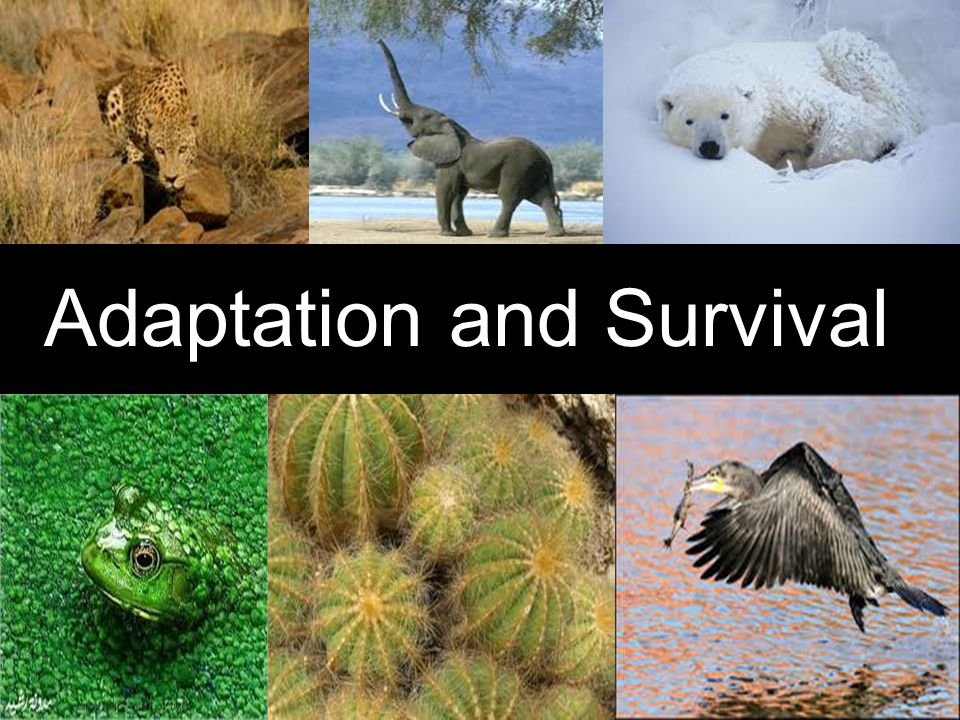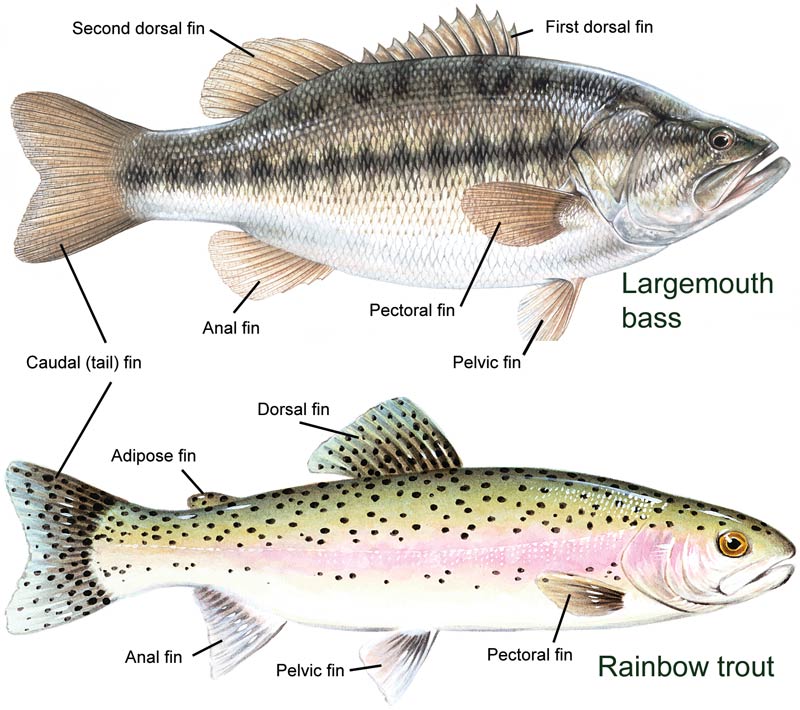Back to: BIOLOGY SS2
Welcome to Class !!
We are eager to have you join us !!
In today’s Biology class, We will be learning about Adaptation in Nature. We hope you enjoy the class!

ADAPTATION
Adaptation is defined as the ability of an organism to live successfully in a particular habitat as a result of its structure, appearance and behaviour. It is expected that every organism must adapt to its environment in order to survive. Plants and animals possess certain features which enable them to adapt to either aquatic or terrestrial habitats.
Animal Adaptation
(1) Adaptation of Animals to Aquatic Habitat
(i) Possession of streamlined body for easy movement in the water, e.g. Tilapia fish and toad.
(ii) Possession of fins for movement as in the case of fish and webbed toes as in toad
(iii) Possession of gills for gaseous exchange in fish and tadpoles.
(iv) Possession of swim bladder for the purpose of buoyancy in water, e.g. Tilapia fish.
(v) Possession of tail for swimming, e.g. tadpoles.
(vi) Possession of sticky undersurface for attachment to surfaces of objects, e.g. snails and flatworms.
(vii) Possession of suckers or hairs for attachment to vegetation so as to avoid being swept away by water current, e.g. leeches.
(2) Adaptation of Animals to Terrestrial Habitat
(i) Possession of powerful limbs for movement, e.g. mammals.
(ii) Possession of lungs for gaseous exchange, e.g. mammals, birds, reptiles and amphibians.
(iii) Possession of sweat gland for excretion and cooling, e.g. mammals (iv) Possession of hair as in mammals and that of feathers as in birds for body temperature regulation.
(v) Possession of skin as in mammals and cuticle by insects to protect and prevent drying up and injury.
(3) Adaptation of Animals to Arboreal Habitat
{i) Possession of wings for flight, e.g. birds.
(ii) Possession of hollow bones to make them light, e.g. birds.
(iii) Possession of bright colour as well as camouflage, e.g. chameleon.
(iv) Possession of powerful limbs, claws and tails for climbing and piercing, e.g. birds, monkeys and baboons.
(v) Possession of streamlined body for easy flight, e.g. bird
(vi) Possession of strong muscles and tendon to ease flight, e.g. birds.
(vii) Feeding mainly on grains to provide the energy required for flight, e.g. birds.
Plants Adaptation
Adaptation of Plants to Aquatic Habitat
(i) Possession of waxy cuticles on leaves to prevent wetting, e.g. water lettuce
(ii) Possession of long stem and flower stalk to expose the flowers and leaves e.g. water lily.
(iii) Possession of adventitious roots, e.g. water lettuce.
(iv) Possession of air floats in the leaves and stems for buoyancy, e.g. water hyacinth.
(v) Possession of breathing roots for gaseous exchange, e.g. white mangrove
(vi) possession of air spaces in the tissues for buoyancy, e.g. water lettuce.
Adaptation of Plants to Terrestrial Habitat
(i) Possession of extensive root system for anchorage and water absorption, e.g. mahogany.
(ii) Possession of thick barks on the stems to protect internal tissues.
(iii) Possession of numerous leaves to enhance better photosynthesis.
(iv) Possession of succulent stems by desert plants to enable them to store excess water.
(v) Possession of tiny and scanty leaves by desert plants to reduce water loss through transpiration.
(vi) Possession of thick, waxy cuticles on leaves to prevent water loss through transpiration.
Evaluation
- Mention the features that adapt hydrophytes to water.
- Mention five adaptive features of arboreal.
Special Adaptation of Some Organisms
- Adaptation of Tilapia Fish for Movement
These adaptive features are:
(i) Possession of fins for movement in the water.
(ii) Presence of streamlined body for easy movement.
(iii) Possession of the lateral line system for detection of vibration in water.
(iv) Possession of a powerful tail which is used for propelling the fish forward.
(v) The direction of the fins and scales backwards aid easy movement through the water.
(vi) Possession of large eyes without eyelids which enables it to see predators and preys easily.
(vii) Possession of swim bladder which aids its buoyancy in water.
(viii) The silvery-white colour of the body below and black above prevent it from being seen by enemies.

- Adaptation of Birds for Flight
These adaptive features are:
i) Possession of light bodyweight to ease flight.
II) Possession of feathers for protection.
ii) Possession of wings for flight.
v) A Streamlined shape of the body to ease flight.
- Adaptation of Toad or Frog for Food, Protection and Movement

For Food
(i) It possesses special olfactory organ in the head for smelling/perceiving the odour of its food.
(ii) It has the ability to draw eyes in so that they make bulges in the root of the mouth which help to prevent their prey from escaping and help in swallowing.
(iii)The tongue is attached at the front of the mouth which can be rapidly extended to capture/trap prey.
(iv)The tongue is long and sticky to hold prey.
(v) Its long tongue helps in catching prey.
For Protection
(i) The skin is slimy with mucous gland which makes the animal difficult to be caught by predators.
(ii) The slimy fluid keeps the skin moist and prevents the skin from drying up.
(ii)Toad has poison glands on the skin which is poisonous and distasteful to the predators.
(iii) Brownish colour or cryptic colouration helps to blend with the colour of the surroundings and this prevents them from being noticed by predators.
(iv) Ability to alter its colour to blend with the background
For Movement
i) A toad has long hind limb with powerful muscles which enables it to hop or jump efficiently.
ii) Absence of tail enhances hopping or jumping movement.
iii) Webbed hind limb can be used as a Paddle for efficient swimming in water.
iv)The stout and short nature of forelimb absorbs shock on landing.
v) It possesses a streamlined body for easy movement and swimming.
Evaluation
- Highlight the adaptation of birds for flight.
- Mention the features of toad and their uses
We have come to the end of this class. We do hope you enjoyed the class?
Should you have any further question, feel free to ask in the comment section below and trust us to respond as soon as possible.
In our next class, we will continue learning about Adaptation. We are very much eager to meet you there.
